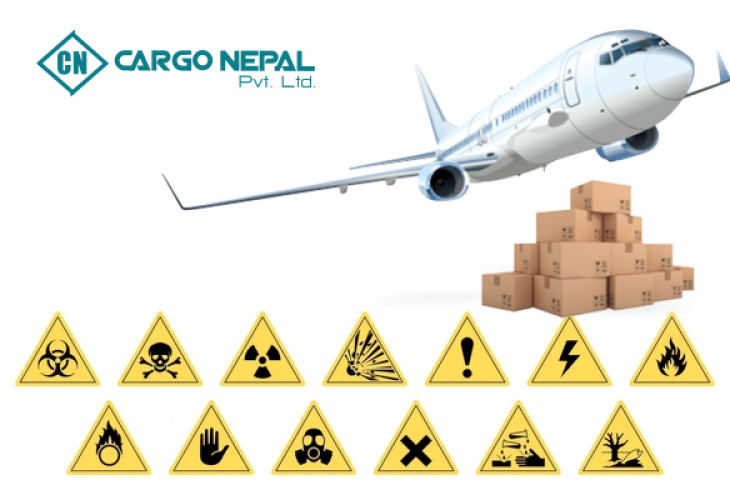- Home
- Blogs
- About
- Services
- Team
- Group Companies
- Contact Us
- सुचना *
-
Call Us On:
+977 1 5320150, 5320160 -
Send us a Mail:
info@cargonepal.com.np -

The timely and effective movement of products is essential to the functioning of the world economy, and air cargo is a key component of this process. However, there are particular difficulties and risks associated with shipping some commodities by air that are categorized as dangerous items. International laws have been put in place to address these issues and guarantee the security of air travel while reducing the risk of dangerous cargo accidents. This article examines how legislation governing the transportation of dangerous commodities may affect international air freight operations.
Hazardous goods, sometimes referred to as hazardous materials, are a broad category of substances that may be detrimental to one's health, safety, property, or environment because of their intrinsic qualities. These products are divided into a number of groups according to attributes including reactivity, toxicity, and flammability. Common risky commodities in the context of air cargo include explosives, gasses, flammable liquids, corrosives, and radioactive materials.
International Regulations Governing Air Cargo Shipments:
The International Civil Aviation Organization (ICAO) produced the Technical Instructions for the Safe Transport of Dangerous Goods by Air to guarantee the safe transportation of hazardous materials by air. These guidelines offer a uniform framework for the recording, labeling, packing, and classification of hazardous materials in air cargo shipments. Furthermore, individual nations could have their own laws that complement or go beyond the ICAO recommendations.
Regulations pertaining to air cargo are shaped and carried out in large part by the International Air Transport Association (IATA). The IATA's Dangerous items Regulations (DGR), which outline the particular requirements for the safe transportation of dangerous items by air, act as a comprehensive guide for airlines, shippers, and freight forwarders. These rules must be followed by airlines and other organizations that handle air freight in order to guarantee compliance and avert possible safety incidents.
Key Implications for Shippers:
Proper Classification and Documentation:
Shippers must accurately classify dangerous goods according to regulatory guidelines. Incorrect classification can lead to serious consequences, including delays, fines, and safety hazards. Accurate and complete documentation, including the use of proper labels and markings, is crucial for the efficient processing of air cargo shipments.
Packaging Requirements:
Dangerous goods must be packaged in accordance with specific regulations to prevent leaks, spills, or reactions during transport. Packaging standards outlined by ICAO and IATA are designed to ensure the integrity of the goods and protect against potential hazards.
Training and Certification:
Individuals involved in the handling and transportation of dangerous goods must undergo specialized training to understand the regulations and safety protocols. Certification programs, such as those provided by IATA, validate that personnel are adequately equipped to manage the unique challenges associated with dangerous goods.
Security Measures:
Given the potential risks associated with certain dangerous goods, security measures are in place to prevent unlawful interference. These measures include rigorous screening processes, secure storage, and strict access controls to safeguard against intentional harm.
The transportation of dangerous goods by air is a complex and highly regulated process. International agreements, such as those established by ICAO and IATA, set the standards for the safe transport of hazardous materials, providing a framework that promotes consistency and adherence across borders. Shippers, airlines, and regulatory bodies must work collaboratively to ensure the effective implementation of these regulations, safeguarding both the global supply chain and the well-being of those involved in air cargo operations. Strict compliance with dangerous goods regulations is not just a legal obligation but a fundamental aspect of responsible and sustainable international trade.